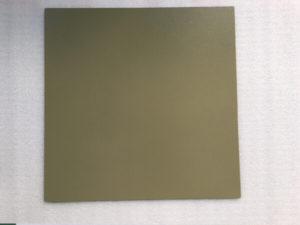Many customers often consult the types of grid in radiology when selecting the types of grid in radiology. Here is an introduction to the types of grid in radiology:
Divided by structure
Convergence grid-each lead bar is inclined to the focal point, that is, the extension line of the lead bar is concentrated on the focal point.
Parallel grid-each lead bar is parallel to each other in the vertical plane.
Crossing grid—composed of two layers of parallel grids, the lead strips are 90° to each other.
Circular arc grid-from the center outwards, the same radius is superimposed, like a tile. The convergence gate is the most widely used.
Divided by motor function
Fixed grid
Vibrating grid-grids with low grid density (28L/cm) can only be used as movable grids, and are mostly used on industrial frequency X-ray machines.
Divided by the material of the grid
Commonly used grids-the internal spacers are made of non-metallic materials, such as wood chips, paper chips, plastics and other non-metallic low-density materials.
All-metal grid-the internal spacer is a metal material: aluminum sheet. It has high strength and good moisture resistance.
Divided by filling material:
Aluminum base-less radiation absorption and cost-effective
Paper base-susceptible to dampness, and now there are very few applications
Carbon-based-the production process is cumbersome and the cost is high, but the ray transmittance is good, and the image quality is good.
We at Newheek are a professional manufacturer of X-ray machines and accessories. If you need to know the types of grid in radiology, please feel free to contact us.

Author:Lillian
Tel: +86 18953679166
Email: service@newheek.com
Company: Weifang Newheek Electronic Tech Co., Ltd.
Address: E Building of Future Star Scientific Innovation Industrial Zone of No.957 Wolong East Street, Yulong Community, Xincheng Sub-District Office, Weifang Hi-tech Zone, Shandong Province, China